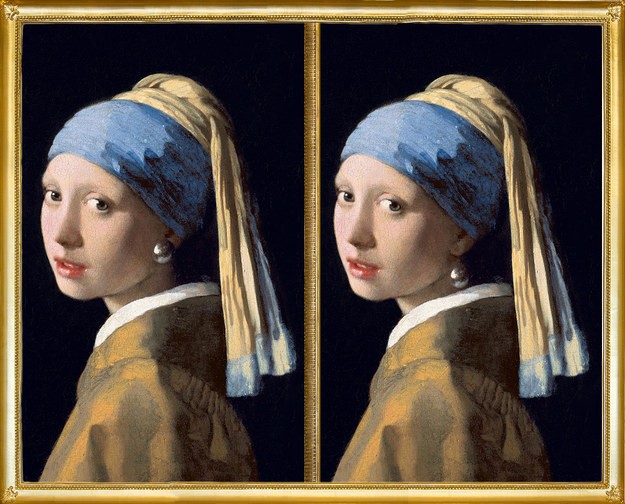
The argument of whether a forgery is actually art derives from how art is defined and what is the intent of the creator of the forgery. In all instances, a forger has the intent to defraud a client, dealer or gallery and pass the work of art off as an original. Discounting the crime of forgery in the legal sense, is forgery also a moral or ethical crime against the medium itself? Is the intended fraud that is perpetrated an art unto itself?
Any individual who reproduces any work of art with the intent to pass it off as an original is guilty of fraud and is subject to criminal prosecution. That is not debatable, if and when the fraud is discovered. However, the question remains if the deception is not discovered, is the work then considered art? Is ignorance in this case artfully bliss? Necessary attributes regarding art and the forgery thereof include originality, creativity, history, geography, and chronology. If a work of art is not genuine in these areas, then it can be assumed to be a forgery. Also important is the aesthetic value of the piece. If a forger matches an art master stroke for stroke, does it diminish the aesthetic value of the fraud? If one cannot distinguish the fake from an original is its beauty intact? It is a piece that is created using skill, but is lacking in all other aspects that define original art.
As with the original artist, the forger must also have intent. An important aspect of the forger’s mindset is his/her motivation. Is it simply monetary or is it an ego-based challenge to fool even the best of art experts by “getting away” with it? Perhaps there is a psychological reward for beating the system. However, if a forger is so skilled in his/her medium, why not just apply that skill to a legitimate creation of art? In examining the skill set necessary for a forger to have a work escape detection, the art forger must be almost as skilled as the master, especially if the forgery is a historical piece. This lends itself to the argument of whether or not forgery is an art form unique to itself. The forger must first and foremost be an accomplished artist, must have the knowledge of brush strokes of the original artist, and must understand the historical background of the piece. In addition, the forger must somehow match the chronology of the paint and the canvas if he/she intends to pull the trick off. Passing 21st century materials off as their historical counterpart must require the skills of a well-studied individual which are not obtained overnight. Can this skill trick a carbon dater?
The academic debate over the fraud brings up the moral and ethical injury to the concept of art. While a forger may reproduce the work of art, he/she cannot reproduce the mindset behind it. The perception of a 17th century artist cannot be duplicated by a 20th century forger, therefore the “heart” and originality of the work can never be duplicated. The attempt by the forger is therefore a moral and ethical affront to art. And while not criminally punishable, it is an egregious crime against art itself. A true artist would never do this. Or would they? If it comes down to forge or starve, are the morals and ethics attributed to art even a consideration? What about forgery as its own, unique subset of art? Forgers must invest a great deal of time, effort and study to perfect their craft. One does not simply pick up a brush or a chisel and proceed to replicate a work of art that passes for the original. Because the forger is not an original creator of art, does that, by definition, compromise the art produced? Is there any less skill involved or because of the lack of creativity or originality? If Bob Ross could have produced masterpieces as part of his half-hour Public Broadcasting System show, would that call into question his skills as an artist? The question that must be answered is: if forgers in any medium are given any type of recognition for their skills, does this diminish the skills and labor of the original artist? Does it cheapen the original if the art world recognizes the talent behind the fake? Criminally, the forger can be prosecuted if caught and the crime is a felony. However, is the true crime even more sinister than its legal ramifications? Does it come at the cost of our perceived cultural value of beauty and aesthetics? That is a question to be answered by someone with a greater skill set relative to art than I. However, to quote John Keats, “Beauty is truth, truth beauty, – that is all ye know on earth, and all ye need to know,” (Keats, Ode on a Grecian Urn) may be an appropriate response.







